We are pleased to share this article about Textile Design and Textile Product Science written by Jim Kaufmann for Textile World, published on September 30, 2020.
A Study In Collaboration
Thomas Jefferson University positions students well for the real world with its collaborative, transdisciplinary approach.
Collaboration is generally defined as the act of working with others towards a common purpose, usually to create or produce something. There are numerous examples of successful collaborations bringing out the best in virtually every aspect of the arts and design. “You design because of an identified opportunity,” said Marcia Weiss, director, Fashion and Textiles Futures Center at Philadelphia-based Thomas Jefferson University. “Design inspiration and the resultant ideation process are where collaboration often lives. For me, it’s also where the joy and excitement happens. Finding that innovation consistently would be next to impossible without some level of collaboration.”
In all areas of business, including the fashion and textiles industries, there are numerous examples of strong collaborations throughout each level of the product supply chain, where effective communication is critical, regardless of what the product happens to be. In practice, however, though the benefits may appear obvious, effective collaboration in any form is often easier said than done, which makes it rather unique to discover a university that prides itself in actively fostering and encouraging collaboration as an essential component of the learning it instills.
Two Universities, One Common Goal
Today’s Thomas Jefferson University (Jefferson) is the result of a unique merger between institutions of higher learning — Jefferson and Philadelphia University (Phila U) — that was finalized in July of 2017. The merger combined two well-established institutions with “a shared and unique approach to education creating a professional university that defies convention and dedicates itself to collaborative, transdisciplinary and inter-professional approaches to learning by offering a vibrant and expandable platform for education; setting tomorrow’s standards by breaking today’s.”
Jefferson was founded in 1824 as Jefferson Medical College with the intent of exploring and reshaping how medicine was taught throughout the United States. In 1877, it established the Thomas Jefferson University Hospital becoming the second medical school in the United States with a separate teaching hospital. In 1891, it added the Jefferson Hospital Training College for Nurses, and in 1967 the College of Applied Health Sciences before officially being recognized as Thomas Jefferson University in 1969. Jefferson’s continued growth and evolution included the addition of the College of Biomedical Sciences, the Sidney Kimmel Cancer Center, and the Schools of Nursing and Health Professions and eventually the merger with PhilaU.
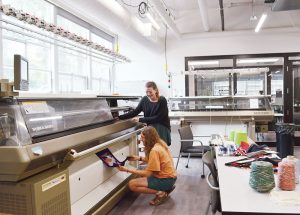
Collaboration Becoming a Common Theme
PhilaU was founded as the Philadelphia Textile School in 1884 by local textile manufacturers looking to improve the quality of U.S. textile products after finding themselves falling behind competitors in technology and ability. In 1949, after gaining the rights to award baccalaureate degrees, it changed its name to the Philadelphia Textile Institute (PTI) and moved to the current East Falls, Pa., location. As its curriculum grew and broadened, PTI became the Philadelphia College of Textiles and Sciences (PCT&S) in 1961. With its continued growth and diversity of program offerings, PCT&S was granted university status in 1999 and renamed as Philadelphia University. Advancing to current day, PhilaU is now referred to as Jefferson’s East Falls Campus where the collaborative teaching environment continues to thrive.
The East Falls Campus has always been small, diverse, and tight-knit, with a “sense of community that is authentic.” Here, fashion and textile programs have continued to persevere and advance, despite the ups and downs of the textile industry. Coupled with additional disciplines ranging from design and engineering to health and architecture inspires a spirited culture. The origins of its collaborative environment appear to be more of a progression that had its roots in textiles versus a specific plan or concentrated effort.
“When you think about it, textiles have always been about collaboration,” suggested Dr. Brian George, associate professor of engineering and textiles. “Fabric and how it performs is essentially a collaboration between the fiber chosen, how it is processed into yarn, the fabric construction, weave, knit, nonwoven, and maybe a finish or coating employed. The textile industry exists because of collaborations. It couldn’t exist if it weren’t able to bring all different sorts of mindsets together throughout the supply chain to create the right textile product for the application.”
According to Dr. Chris Pastore, professor of Transdisciplinary Studies, who actually began his career as a lab assistant at PCT&S: “The emphasis on collaboration just sort of evolved over time. I don’t think there was ever a conscious effort made. It’s more part of the heritage or DNA from Philadelphia Textile than anything else. Over the years, various professors would bring in industry projects and engage students and others to help in those problem-solving efforts. The projects all had textiles as the core, but many had applications that were spreading out beyond traditional applications into emerging technical and performance-driven arenas, inspiring collaborations in new directions. It’s transcended over time into the other disciplines here and became a large component of who we are and how we work.”
The result is an effortless collaborative climate that has simply evolved into a way of learning and a way of life, which almost appears to be taken for granted around campus and second nature to most there. Yet, this climate is what many feel is truly special about Jefferson’s East Falls Campus. “Here interdisciplinary work is something you don’t really think about,” Pastore said. “It just happens. We don’t have barriers between departments or disciplines and the departments don’t exist in their own silos, which only fosters collaboration. We can work with anyone we want without raising any eyebrows. You see someone from yours or another department and just start talking, asking questions, maybe answering them, discussing or debating as ideas get formed. It really is liberating and makes it easy for me to come to work every day.”
When asked how the two different cultures of Jefferson and Phila U interacted initially, Pastore said, with a smile: “They’re coming to understand how our collaborative environment is beneficial. It definitely had a different feel at first, but we’re training them!”
“Our new colleagues from Jefferson have embraced our environment, but in some of the first opportunities where they saw the interactions we had with each other and how we were working so closely with the students, one of them asked ‘how can you work this way?’ to which my immediate thought was, how can you not?” Weiss added, also with a smile.
The collaborative environment certainly appears to be growing on their new Jefferson colleagues. “The merger of the schools has resulted in natural collaborations,” George explained. “Jefferson’s medical school never really had an in-house design or engineering department or direct access to textile technologies in the past. Now that they do, we’re seeing more people interested in textiles from Jefferson’s medical side. They know what they want and what they need from their perspective and we’re able to translate that into textile products and potential opportunities.” Some of these new collaborations include more effective helmets based on reinforced composites technology; innovations in personal protective equipment (PPE) in large part a result of the COVID-19 pandemic; novel bandages that are more easily removed from the skin; new fiber, yarn, and fabric concepts; and potentially implantable devices for unique applications inside the body.
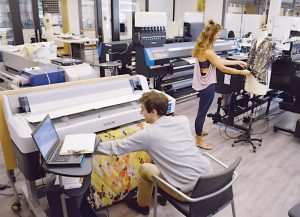
Various Forms of Collaboration
As one might surmise, collaborations can take on many forms at Jefferson. There are numerous opportunities between students and professors and different disciplines that can be by design or simply informal in nature. Collaborations also can extend to and involve other universities and industry partners. These interactions position Jefferson students well for the real world and for answering the often-asked interview question of “What can you do for this company?” It appears Jefferson’s collaborative environment and philosophy are working well because the university boasts an impressive 97-percent success rate for undergraduate students in securing jobs or going on to graduate school.
“I loved school and it remains a go-to resource for me,” reported Jodi Wallis, a 2014 Phila U graduate and director of research and development at Scranton, Pa.-based Nobel Biomaterials. “I knew nothing about textiles when I arrived yet graduated with a degree in textile materials technology. There was a lot of hands-on work, and the exposure provided to me through the school’s relationships with industry proved to be very helpful in starting my career.”
Nathalie Bouchard, a current senior in the textile design program, added: “I really feel like I’m learning something new every day. The faculty is very nurturing and supportive. Textiles have a lot of niche subject matter that you need to absorb, but you can’t fully comprehend how to thread a knitting machine or program a jacquard pattern online. So, you seek out interaction with faculty and other students to learn. You build those connections and they stay with you. Even with the current remoteness of COVID, I still feel the connection.”
“We’re very hands-on at Jefferson and want students to take advantage of every opportunity they can while here,” Weiss explained. “What does collaboration look like from a design, engineering, and/or marketing perspective? In many cases, it’s defined by the student and their goals. That is what’s special about Jefferson and the highly collaborative nature of the education we provide.”
This sentiment was emphasized by Samantha Fletcher, a recent Textile Design Master’s program graduate, and creative manager for the design team at flooring manufacturer Mannington Commercial, Calhoun, Ga. “To be an effective designer, you need to make that connection between the design, the machine, and manufacturing.”
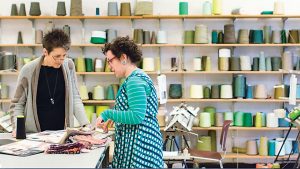
Industry Involvement
Along with the informal interactions throughout the campus, Jefferson also offers several structured and innovative collaborative options for students to participate in. There’s the Sunbrella® What’s Next Design Competition which is held every two years and sponsored by Glen Raven Inc., Glen Raven, N.C. Its genesis was Glen Raven’s interest in next-generation designers. The company provides Jefferson with its latest pallette of various yarns and colors from the Sunbrella brand for the competition. Students then are tasked with creating unique and novel fabric designs, with very few restrictions. The biennial competition is held over an academic year and open to anyone at Jefferson, but the bulk of participants tend to be textile designers or textile product science majors.
According to Weiss: “Glen Raven has been very involved and supportive of this competition, which we’re in our eighth year of holding. They participate in the competition’s introduction to the students, bring in employees and clients as judges, provide the monetary awards, and sponsor networking opportunities with a great range of industry professionals for the students to interact with. The interactions have led to student internships and even full-time careers. It’s been a great partnership for us.”
A course in Integrated Engineering Product Development is centered around a collaboration project which is open to undergrad and grad students. “The course pulls in students from different backgrounds and education levels who then work with select outside companies to find new uses for their product offerings,” George explained. “Basically, here’s what we currently do with it, what else can we do with the product? The course gives students the experience of communicating directly with industry professionals to gain knowledge they wouldn’t necessarily get from the classroom. It usually ends up being a friendly competition of sorts between several teams which can be fascinating to observe.”
Jefferson is laden with opportunities for students to explore options and influence the program’s direction. Internships, assistantships, innovation programs, and collaborations with other universities are available within the United States and abroad, occasionally with students actively consulting with their advisors to create their own destinies. “I really loved that Jefferson allowed me the flexibility to shape my Master’s program into what I wanted it to be,” said Fletcher, who incredibly managed to orchestrate and spend time studying in Finland, China, and Senegal as part of her Master’s degree program at Jefferson. “They helped me figure out who I am and where I wanted to be.”
Collaborations at Jefferson can also lead to new cutting-edge technologies and innovative products brought to market. For example, the company Hemp Black, Greensboro, N.C. — a subsidiary of Georgetown, Ky.-based Ecofibre — began as a collaboration between Australia-based Ecofibre and PhilaU to test, analyze, and explore opportunities for hemp fiber. “Hemp Black is a unique opportunity and a great example of real-world experience preparing students for the future,” according to Mark Sunderland, vice president of Innovation and Technology. “Research for research is important, but in today’s world, it is getting harder to pay for. Collaboration is the key in helping research to become real as with Hemp Black. Jefferson participated in much of the research to bring an original concept for using hemp into a commercial product. A number of students have been involved in this research and subsequent bio-protocol activities which began in 2016. Now Hemp Black employs four Jefferson grads full-time. The research is winding down as the company grows into itself, but it’s been a positive experience and a real benefit to all involved.”
“A textile education is a colorful, vibrant, valid, and enticing path forward. And we position students well for the real world,” Weiss said. “When a prospective employer asks our students ‘what can you do for this company,’ they typically have a pretty good answer!”
Thomas Jefferson University, a study in collaboration indeed. Where does one enroll?
September/October 2020
Republished from https://www.textileworld.com/textile-world/features/2020/09/a-study-in-collaboration/.


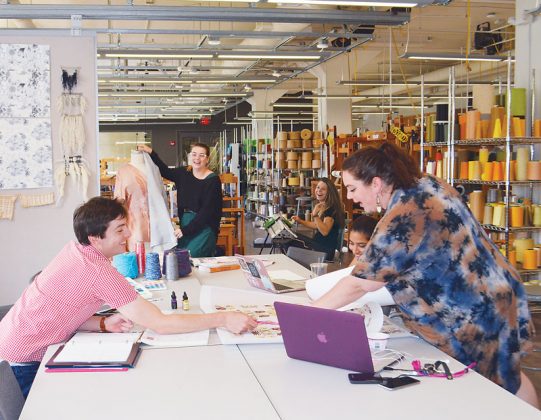
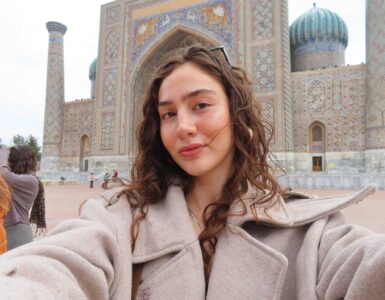
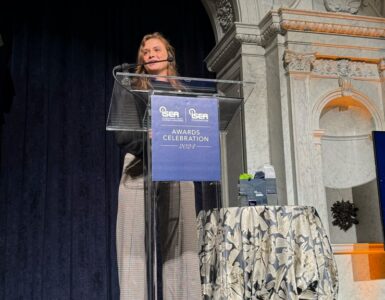
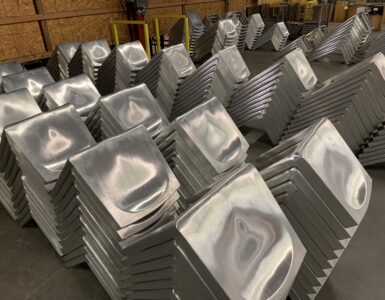

Add comment